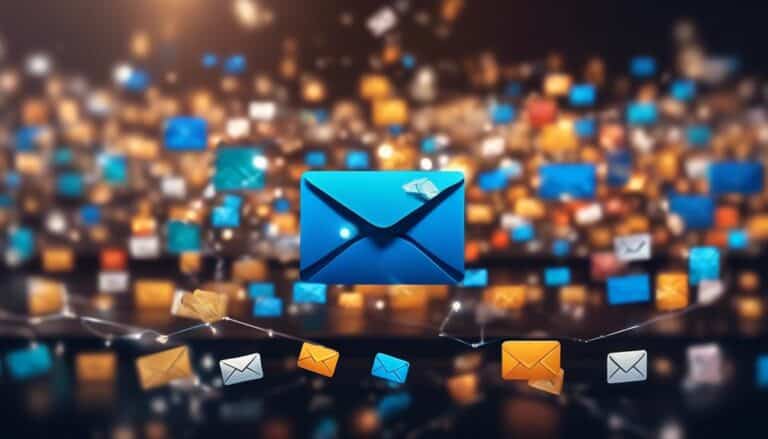A Beginner's Guide To Successful Email Marketing Campaigns
Embarking on an email marketing campaign can be a daunting task for beginners, but with the right strategies and know-how, it can be an incredibly effective tool for reaching your target audience. In this comprehensive guide, we will walk you through the essential steps and best practices to ensure that your email marketing campaigns are successful and drive results.
Email marketing is a powerful way to connect with your audience and drive engagement, but it requires careful planning and execution. From building a strong email list to crafting compelling content and analyzing your results, this guide will cover everything you need to know to get started on the right foot with your email marketing campaigns. Whether you’re launching your first campaign or looking to improve your current strategy, this guide will provide you with the knowledge and tools to make your email marketing efforts a success.
Key Takeaways:
- Understanding Your Audience: Successful email marketing campaigns require a deep understanding of your target audience’s preferences, behaviors, and pain points.
- Consistent Branding and Messaging: Maintaining a cohesive brand image and messaging across all email communications helps to build trust and recognition with your subscribers.
- Measurement and Analysis: Regularly measuring and analyzing key metrics such as open rates, click-through rates, and conversions is essential for optimizing and improving the performance of your email campaigns.
1. Understand your target audience and their needs.
2. Create engaging and valuable content for your emails.
3. Use a reliable email marketing platform to send campaigns.
4. Utilize catchy subject lines to grab attention.
5. Test and analyze the performance of your email campaigns.
6. Continuously improve and optimize your email marketing strategy.
Email Marketing Basics
Obviously, email marketing is a highly effective tool for businesses to reach and engage with their target audience. It involves sending commercial messages to a group of people using email. However, successful email marketing campaigns require a solid foundation and strategic approach.
How-To Identify Your Target Audience
Identify your target audience by researching their demographics, behaviors, and preferences. Understand who they are, what they need, and how they interact with your brand. This will enable you to tailor your email content to resonate with their specific interests and drive engagement.
Tips for Building a Quality Email List
Any successful email marketing campaign starts with a quality email list. Start by collecting email addresses from your website visitors and social media followers. Offer valuable incentives, such as discounts or exclusive content, to attract subscribers. This will help ensure that your email list is filled with engaged and interested individuals.
- Create compelling opt-in forms on your website
- Offer exclusive content or promotions in exchange for email sign-ups
This process is crucial as it allows you to build a list of subscribers who are genuinely interested in your products or services. By focusing on building a quality list, you can increase the likelihood of reaching a receptive audience and driving conversions.
Crafting Your Email Campaign
Not sure where to start with your email marketing campaign? Crafting your email campaign is a crucial step in reaching your audience effectively. From designing eye-catching email templates to writing compelling subject lines and content, there are several components to consider for a successful email marketing strategy.
How-To Design Eye-Catching Email Templates
Crafting visually appealing and engaging email templates is essential for capturing your audience’s attention. Consider using a clean and professional layout with eye-catching graphics and images to complement your message. Make sure your templates are mobile-friendly, as many people access their emails on their smartphones and tablets.
Content and design should complement each other to create a visually appealing and cohesive message. This includes using relevant images, fonts, colors, and branding elements to create a consistent and memorable experience for your subscribers. Plus, the use of white space can help make your content more scannable and easier to read.
Tips for Writing Compelling Subject Lines and Content
Crafting compelling subject lines and content is essential for capturing your audience’s attention and driving engagement. Your subject lines should be concise, descriptive, and intriguing to entice recipients to open your emails. When it comes to content, focus on providing valuable information, addressing your audience’s needs and pain points, and offering solutions or benefits.
- Use personalization and segmentation to tailor your content to specific audience segments.
- Create a sense of urgency or exclusivity to encourage action from your recipients.
- Test different subject lines and content to see what resonates best with your audience.
This can help increase open and click-through rates, ultimately leading to a more successful email marketing campaign. This involves tailoring your content and messaging to specific audience segments based on demographics, behaviors, or preferences to create a more personalized and relevant experience for your recipients.
Best Practices for Personalization and Segmentation
Campaign personalization and segmentation are key components of a successful email marketing strategy. By segmenting your audience and personalizing your content, you can deliver more relevant and targeted messages, leading to higher engagement and conversion rates. Plus, personalization and segmentation can help build stronger relationships with your subscribers, as they receive content that resonates with their specific needs and interests.
Technical Factors for Success
Your email marketing campaign’s success relies not only on the content and design of your emails but also on various technical factors. Paying attention to these aspects can significantly impact your campaign’s effectiveness and deliverability. Here are some technical factors to consider:
- Ensure proper authentication and validation of your email domain to prevent spoofing and phishing attacks.
- Regularly check and maintain a clean email list to minimize the risk of bounces and spam complaints.
- Optimize your email content and design for mobile devices to reach a wider audience.
After understanding these technical factors, you can implement them with confidence for a successful email marketing campaign. For more in-depth information on this topic, check out A Beginner’s Guide to Email Marketing for Small Businesses.
Understanding Email Deliverability
An essential technical factor in email marketing is understanding email deliverability. It refers to the ability of your emails to reach the recipients’ inboxes rather than being filtered as spam. Factors affecting deliverability include sender reputation, content quality, and engagement metrics. By focusing on these aspects, you can improve your emails’ chances of reaching the intended audience.
One effective way to enhance deliverability is by implementing double opt-in processes, regularly cleaning your email list, and avoiding spam trigger words in your content. This will not only boost the deliverability of your emails but also protect your sender reputation and maintain a healthy engagement with your subscribers. This can ultimately lead to higher open and click-through rates, contributing to the success of your email marketing campaign.
For instance, by optimizing your email content for mobile devices, you can ensure a wider reach and better engagement with your audience. Paying attention to the quality of your content and implementing double opt-in processes can also improve your sender reputation, leading to higher deliverability and engagement rates.
Tips for Optimizing Open and Click-Through Rates
One of the key goals of any email marketing campaign is to encourage recipients to open the emails and take action. To achieve this, you can implement the following tips to optimize open and click-through rates:
- Personalize your emails to make them more relevant to your subscribers.
- Create compelling subject lines and clear call-to-action buttons to entice recipients to open and click on your emails.
- Segment your email list to send targeted and tailored content to specific groups of subscribers.
This approach can significantly impact the success of your email marketing campaign by boosting open and click-through rates, leading to higher conversion and engagement with your audience.
How-To Avoid Spam Filters and Stay Compliant with Regulations
Open rates and deliverability can be significantly impacted by email filters and regulatory compliance. To avoid your emails being flagged as spam and ensure compliance with regulations such as the CAN-SPAM Act, you can take the following steps:
- Use a recognizable sender name and email address to build trust with your subscribers and avoid being marked as spam.
- Include a visible and easy-to-use unsubscribe link in your emails to comply with anti-spam regulations.
- Regularly monitor and maintain a healthy sender reputation to avoid being filtered as spam by email providers.
Optimizing your sender reputation and complying with email regulations are crucial for successful email marketing campaigns. By doing so, you can not only avoid being flagged as spam but also build trust with your subscribers and maintain a positive engagement with your audience.

Advanced Email Marketing Strategies
Unlike basic email marketing techniques, advanced strategies require a more strategic and data-driven approach. Here are some advanced strategies to take your email marketing campaigns to the next level:
| How-To Implement A/B Testing for Better Results | Tips for Automating Your Email Campaigns |
How-To Implement A/B Testing for Better Results
To improve the performance of your email marketing campaigns, implementing A/B testing can be highly beneficial. By testing different versions of your email content, subject lines, and calls to action, you can gain valuable insights into what resonates best with your audience. Use A/B testing to refine your email content and optimize your open and click-through rates for better results.
Tips for Automating Your Email Campaigns
Testing the effectiveness of your email campaigns is important for optimizing your efforts. Utilize automation tools to schedule and send personalized emails based on specific triggers such as user behavior or demographics. By automating your campaigns, you can save time and ensure that your subscribers receive relevant and timely content. Assume that by automating your campaigns, you can nurture leads and improve customer retention.
- Segment your audience for targeted automation
- Personalize emails based on user behavior
Assume that a well-organized and strategic automation plan can lead to higher engagement and conversion rates. By leveraging automation, you can streamline your email marketing efforts and drive better results.
How-To Use Analytics to Improve Your Campaigns
Strategies for utilizing analytics data can help you gain actionable insights into the performance of your email campaigns. By analyzing metrics such as open rates, click-through rates, and conversion rates, you can identify areas for improvement and make data-driven decisions to enhance your campaigns. Incorporating analytics into your email marketing strategy can help you refine your content, timing, and targeting for better engagement and results.
How-To use analytics to track and measure key performance indicators (KPIs), such as open rates and conversion rates, to gain insights into the effectiveness of your campaigns. By analyzing this data, you can optimize your email marketing strategy for improved performance and ROI.

Maintaining and Growing Your Campaign
To ensure the success of your email marketing campaign, it is crucial to maintain and grow your subscriber list. Regularly updating and re-engaging inactive subscribers, as well as implementing strategies to expand your reach, are key elements in maintaining a healthy and effective email marketing campaign.
Tips for Regularly Updating Your Email List
To keep your email list current and effective, it is essential to regularly update it. This can be achieved by regularly cleaning your list, removing inactive or unsubscribed contacts, and adding new subscribers who have opted-in to receive your emails. After updating your list, make sure to segment it based on different criteria such as demographics, past engagement, or preferences, to ensure targeted and relevant communication.
- Regularly clean and update your email list
- Remove inactive or unsubscribed contacts
- Segment your list for targeted communication
How-To Re-engage Inactive Subscribers
Maintaining engagement with your subscribers is essential for the success of your email marketing campaign. When dealing with inactive subscribers, it is important to try re-engaging them through targeted and compelling content, personalized offers, and special promotions. By analyzing their past behavior and interactions with your emails, you can tailor re-engagement strategies to recapture their interest and bring them back into the fold.
Inactive subscribers, re-engagement, targeted content, personalized offers, special promotions
Strategies for Expanding Your Reach with Referral Programs
Programs that encourage your current subscribers to refer their friends and contacts to join your email list can be an effective way to expand your reach. Regularly promote your referral program to your subscribers, incentivize them with rewards or exclusive offers for successful referrals, and track the performance of the program to optimize its effectiveness. By harnessing the power of word-of-mouth marketing, you can significantly grow your subscriber base and reach new potential customers.
Programs, referral program, promote, incentivize, track performance, word-of-mouth marketing
Common Email Marketing Mistakes to Avoid
Keep
in mind that even the smallest mistakes in your email marketing campaign can have a big impact on your success. To ensure that your efforts are not wasted, it’s crucial to understand the common pitfalls and how to avoid them. Here are some of the most frequent mistakes to watch out for when planning and executing your email marketing strategy.
Overview of Frequent Pitfalls
An effective email marketing campaign requires careful planning and execution. However, there are several common pitfalls that can derail your efforts. These may include sending emails too frequently, using misleading subject lines, and failing to personalize your messages. Additionally, issues such as poor design, lack of mobile optimization, and a failure to segment your audience can also hinder your success.
How-To Address and Correct These Issues
Mistakes in your email marketing strategy can be addressed and corrected with the right approach. Start by carefully reviewing your email content, frequency, and audience targeting. Address misleading subject lines and consider more personalized and targeted messages. Upgrade your email design and ensure mobile optimization. Implement audience segmentation and refine your approach based on analytics data to correct these issues.
Overview: By addressing and correcting the common email marketing mistakes such as frequency, misleading subject lines, lack of personalization, poor design, and failure to segment the audience, you can significantly improve the success of your email marketing campaigns. Consider careful planning, execution, and ongoing refinement to ensure that your efforts are not wasted.
Conclusion
Taking this into account, it is clear that successful email marketing campaigns require a strategic and thoughtful approach. By utilizing the tips and strategies outlined in this beginner’s guide, businesses can effectively engage with their target audience, build relationships, and drive conversions. With a well-crafted email marketing campaign, businesses can showcase their products or services, provide valuable content, and ultimately achieve their marketing goals. It is essential for businesses to continually evaluate and refine their email marketing efforts to ensure continued success in reaching their audience and achieving a strong return on investment.
FAQ
Q: What is email marketing?
A: Email marketing is the practice of sending commercial messages to a group of people using email. It is an effective way to promote products or services, build brand awareness, and nurture relationships with customers.
Q: Why is email marketing important for beginners?
A: Email marketing is important for beginners because it is a cost-effective and efficient way to reach and engage with your target audience. It allows you to build and maintain relationships with customers, drive sales, and increase brand awareness.
Q: How can I build a successful email marketing campaign?
A: To build a successful email marketing campaign, you need to start by defining your goals, understanding your audience, creating valuable content, designing compelling emails, and measuring your results. It’s also important to comply with email marketing regulations and best practices.
Q: What are some best practices for successful email marketing campaigns?
A: Some best practices for successful email marketing campaigns include personalizing your emails, using clear and compelling subject lines, segmenting your email lists, optimizing for mobile devices, and testing different elements of your emails to see what works best for your audience.
Q: How can I measure the success of my email marketing campaigns?
A: You can measure the success of your email marketing campaigns by tracking key metrics such as open rates, click-through rates, conversion rates, and unsubscribe rates. It’s also important to analyze your email marketing data to understand what resonates with your audience and optimize your future campaigns accordingly.







